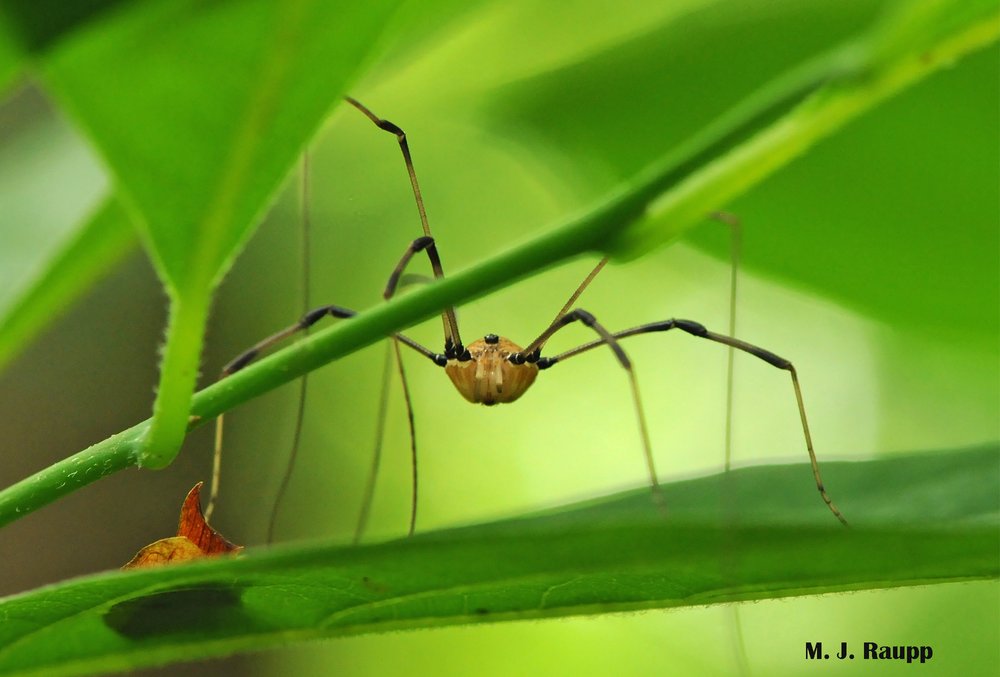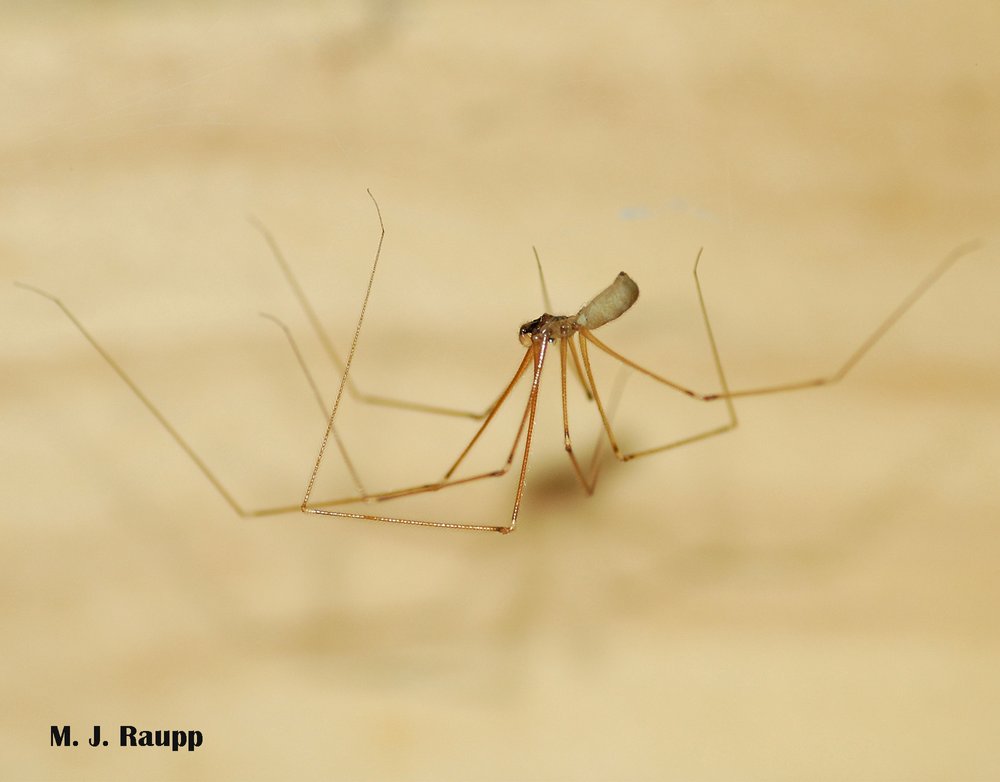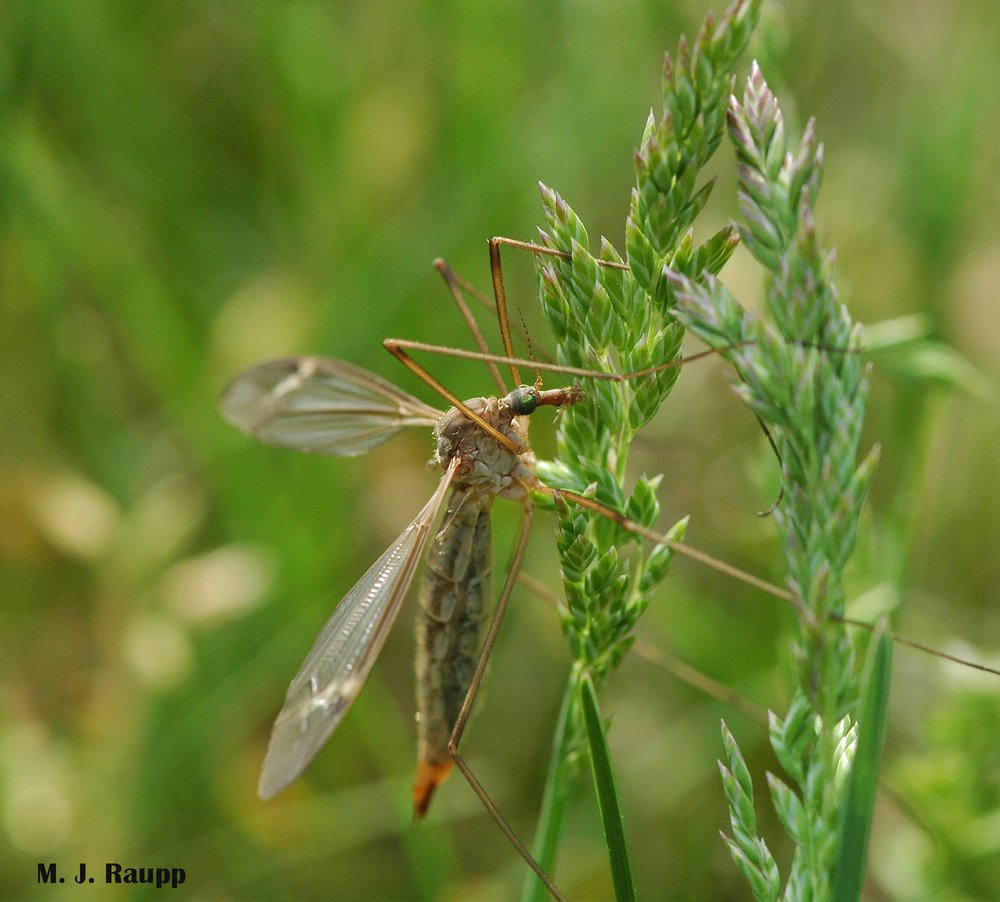
One look at this arthropod and it’s easy to see why they are called daddy-longlegs.
A recent message to Bug of the Week described a pleasant adventure of nature enthusiasts with spider-like creatures known as daddy-longlegs. These interesting arthropods are at the heart of the urban legend proclaiming daddy-long legs as the most venomous of all spiders. A corollary of the legend is that although daddy-longlegs are venomous, their fangs are too tiny to pierce human skin. Like many urban legends this one persists, but fortunately it is baseless. Here’s why.

Pholcid spiders, like this cellar spider, are also known as daddy-longlegs.

With remarkably long legs, some crane flies are also called daddy-longlegs.
Let’s start with nomenclature. First of all, daddy-longlegs is a moniker applied to at least three different kinds of arthropods. According to spider expert Dr. Rick Vetter, daddy-longlegs refers to long-legged spiders in the family Pholcidae, an entirely different arachnid called an opilionid (a.k.a. harvestmen), and a primitive fly called a crane fly. We met pholicids rocking out in corners of a room in a previous episode. Crane flies are sometimes misidentified as giant mosquitoes and have appeared in Bug of the Week as well. But let’s talk about harvestmen, opilionids. The business of harvestmen being dangerously venomous is incorrect on two accounts. First and foremost is the fact that they lack venom glands. No venom glands, no venom. Their arachnid relatives, spiders, including pholcid spiders, subdue prey with potent venom delivered via fangs. Harvestmen lack fangs so the business of tiny fangs is also out the window. Harvestmen feed primarily on decaying vegetation or animals, but they may also be opportunistic predators. I have seen them snacking on hapless cicadas that failed to successfully shed their nymphal skin. Harvestmen are often seen in moist woodlands on vegetation, stumps, or leaf-litter where they search for food and mates. Harvestmen are easily distinguished from their spider relatives. Instead of the two easily seen body regions (cephalothorax and abdomen) characteristic of spiders, the distinction between body segments is indistinct and harvestmen appear to have a single pill-shaped body. If you want to get close enough to look them in the eye, harvestmen have at most two eyes whereas spiders may have as many as eight.
Despite their lack of fangs and venom, opilionids possess clever tricks to help them avoid being eaten by ground dwelling predators. Specialized glands along the margin of the harvestmen release noxious quinones that are mixed with fluids regurgitated from the digestive tract on the harvestmen. The harvestmen smear the stinky concoction along its margins, forming a chemically deterrent barrier around its perimeter. This chemical defense has been shown to deter ants, spiders, and frogs and to make nosy bug geeks wish they hadn’t messed around with an opilionid.
Watch as an opilionid munches on what appears to be the carcass of a small fly or bee. A pair of appendages called pedipalps are used to manipulate its food. On the surface of a small rock near a riverbank a handsome opilionid dines on the shriveled body of a stonefly, aquatic insect jerky.
To learn more about daddy-long legs and the venom-myth please visit the following UC Riverside website: https://spiders.ucr.edu/daddy-long-legs
Acknowledgements
Bug of the Week thanks Larry and his son for sharing their interesting observations of harvestmen and providing the inspiration for this episode. “Chemical defense of an opilionid (Acanthopachylus aculeatus)” by Thomas Eisner, Carmen Rossini, Andrés González, and Maria Eisner, and “Chemical defense in harvestmen (arachnida, opiliones): do benzoquinone secretions deter invertebrate and vertebrate predators?” by Glauco Machado, Patricia C Carrera, Armando M Pomini, and Anita J Marsaioli were used as references for this episode.
No comments:
Post a Comment